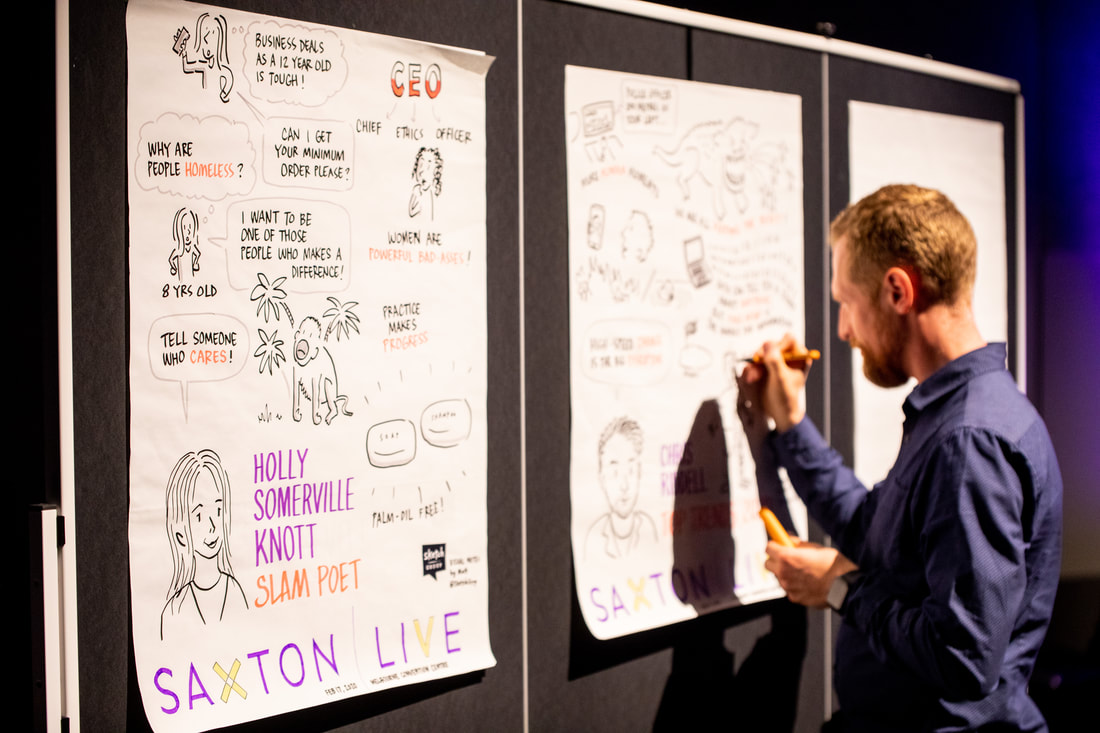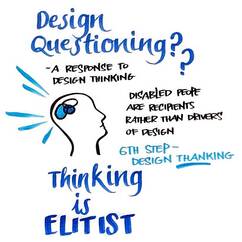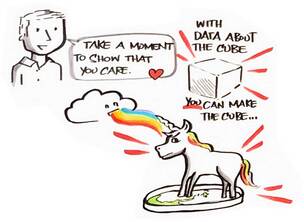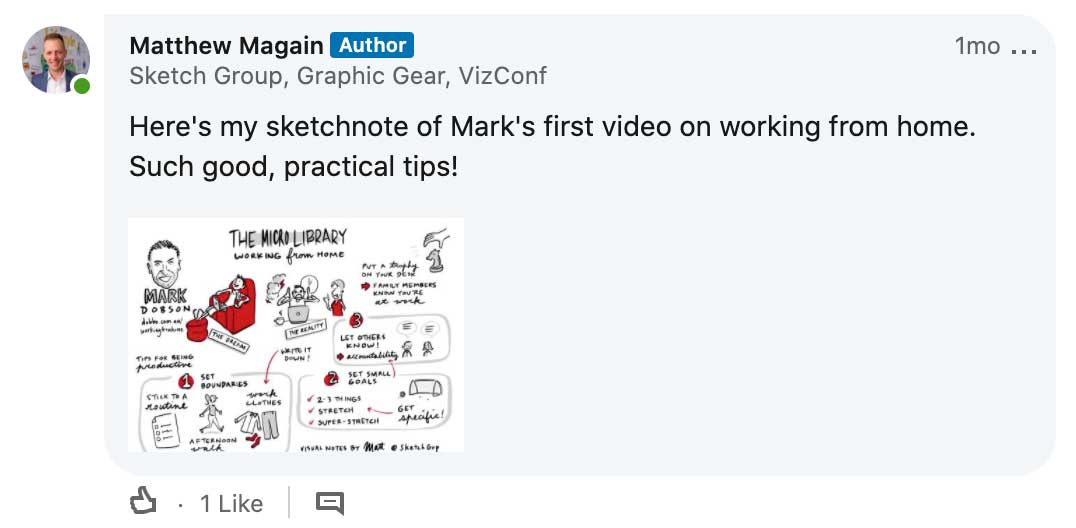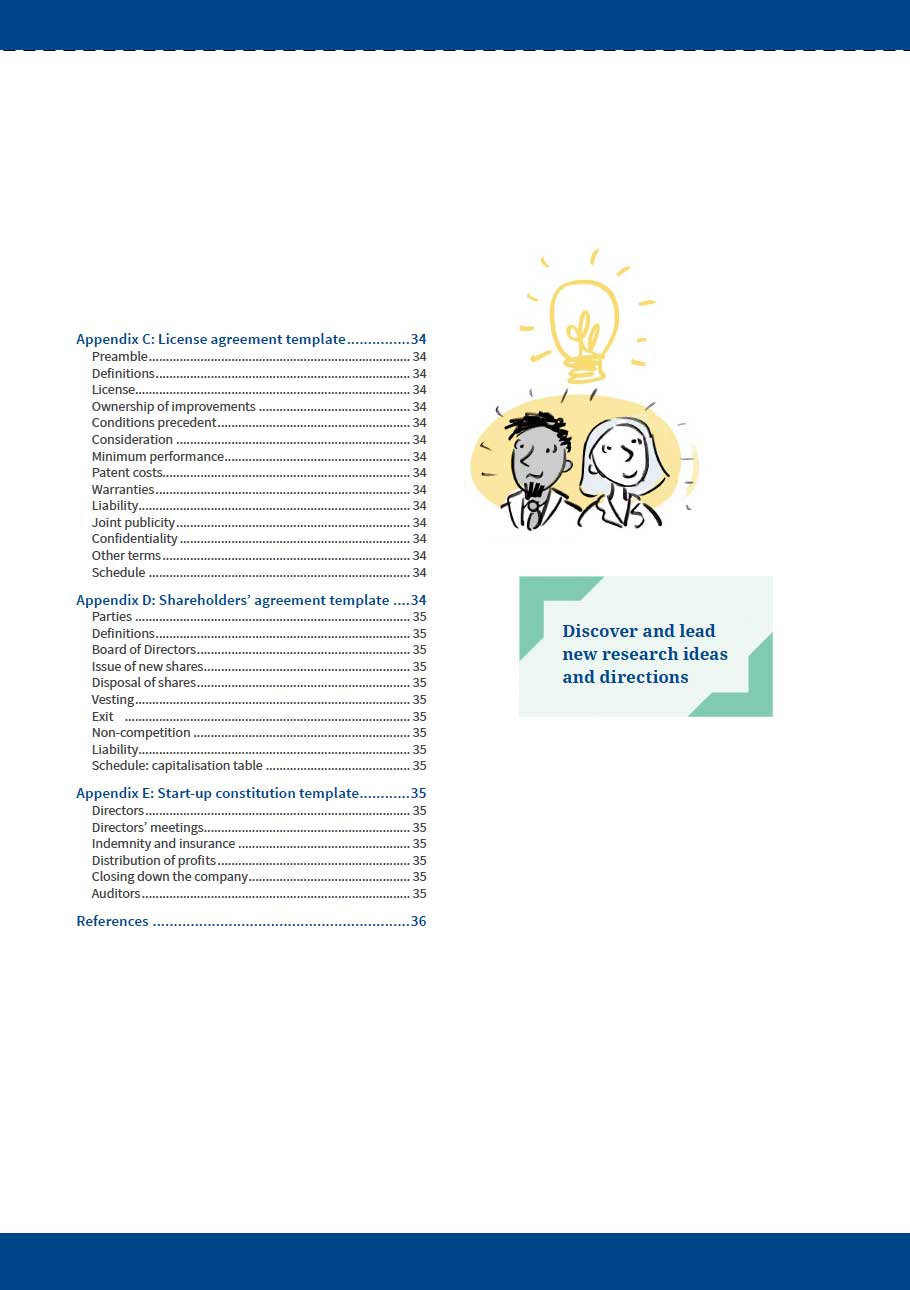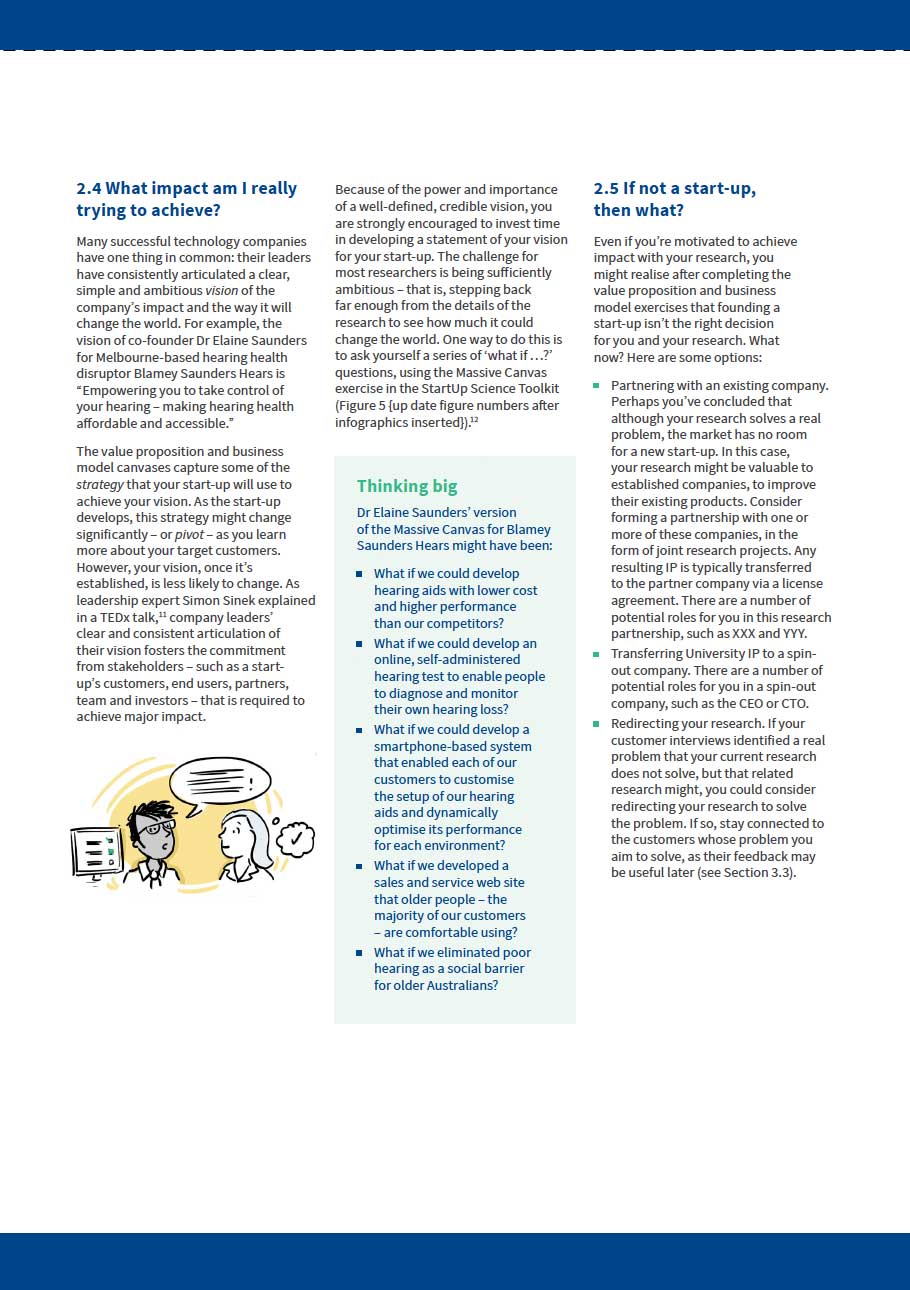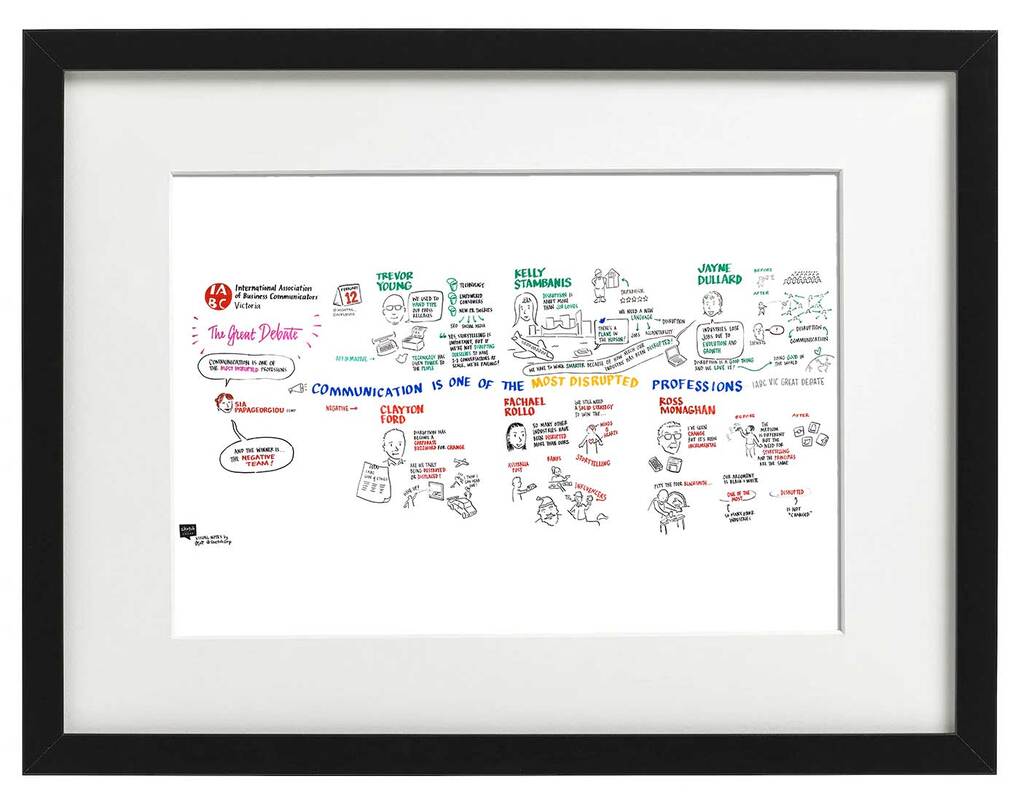Congratulations!
That big conference (or workshop, or virtual meeting) that you organised is finally over, and it was a raging success. All the hard work and late nights you put in have paid off, and you’re being inundated with praise from attendees. Hooray! You even hired a graphic recorder to sketch the event in real-time (either in person or remotely via videoconference), so now you have a colourful graphic recording of the content (something the attendees also said they loved!)
Great … so what are you going to do with it? It looks pretty, captures all the key points, and you paid for it—so don’t bury it in a folder on your hard drive! You might as well use it for something.
Here are seven creative ideas for how you can get the most out of your visual summary once your graphic recorder has sent it through to you:
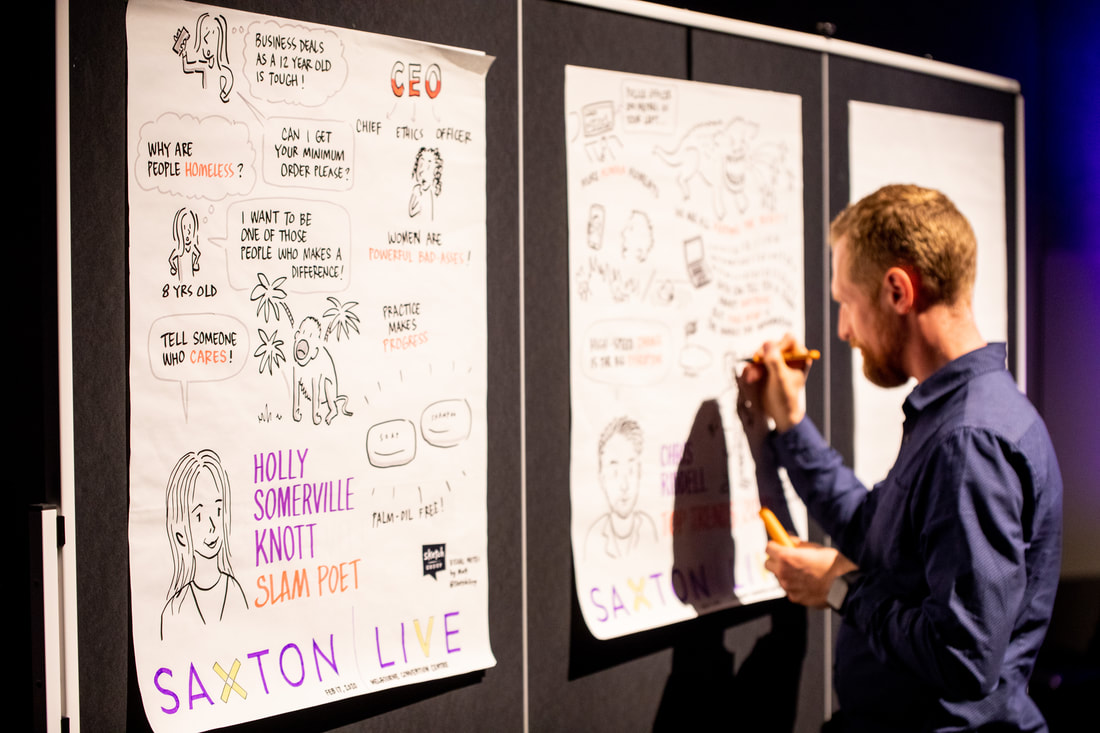
Matt captures the Saxton Live event at the AIME Conference.
1. Post your graphic recording to social media.
Unless there are confidentiality restrictions, it seems kind of obvious that you would share your visual summary on social media. But what’s the best way to actually do this? If the canvas is large, it can be difficult for someone to view on their phone as the text will appear quite small, and won’t be particularly legible.
You have a few options:
2. Use your graphic recording in an ebook, article, brochure, or report.
If you work in communications in any capacity, chances are you work across a number of mediums. Your visual summary can be repurposed in just about all of them! For example:
- Release transcripts of the presentations or interviews from your event as blog posts or articles, with the visual summary from that part of the day as a hero image.
- Write an ebook capturing some of the key takeaways from the event, and include the visual summary (or various cut-down images from the larger canvas) to break the text up.
- Embed cut-down images from the visual canvas in a brochure or report that you write as part of the event—let’s be honest, people will spend more time looking at the pictures than reading the words anyway!
Illustrations by Sketch Group’s Lucinda, from a report for the University of Melbourne
3. Use your visual summary in a PowerPoint, Prezi, or presentation.
The next time you give your presentation, why not mix up your slides to keep things fresh? Audiences don’t want to be bored to death by bullet points, and good images can be hard to find. It may be that the image your graphic recorder created fits the bill nicely!
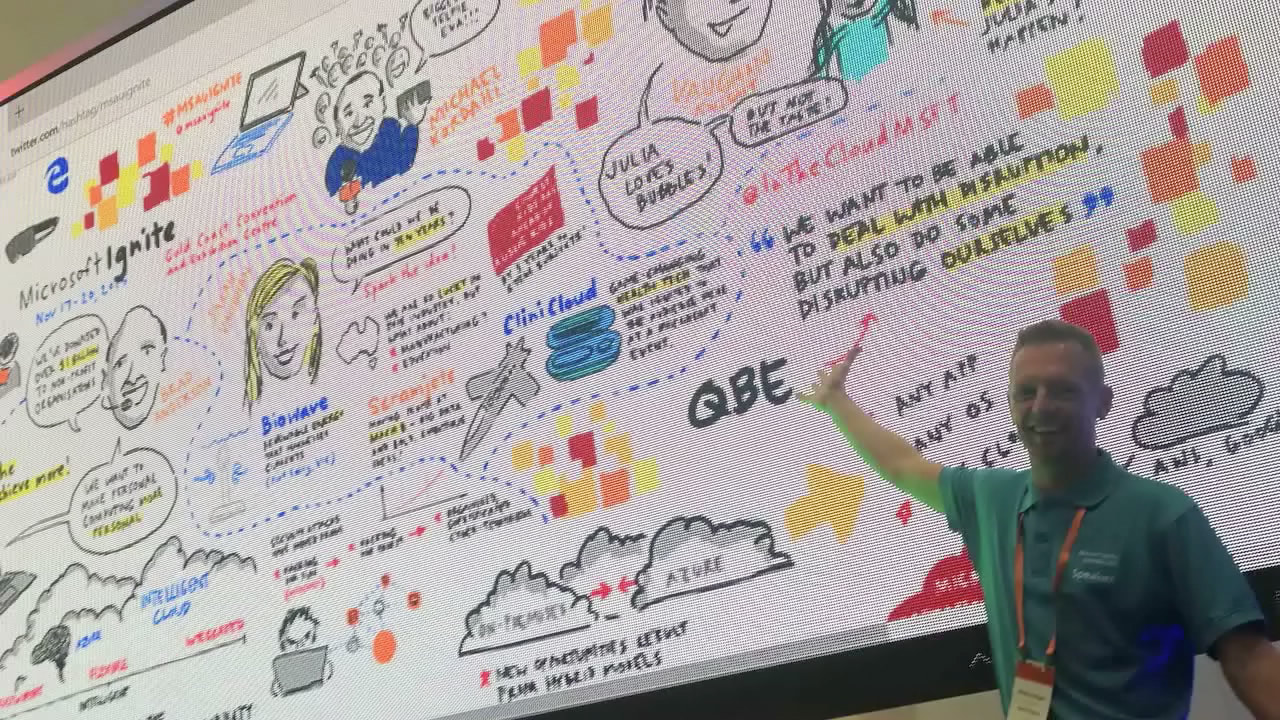
The bigger the screen, the bigger the presenter’s ego?
4. Print the graphic recording out and frame it.
If your event was captured on a large sheet of paper, there’s a small possibility that you have the original visual summary hanging up in the office somewhere as a reminder of what a great day it was. Most people, however, don’t have room in their house or office for artwork that is 2.5 metres wide.
However, your graphic recorder will probably have given you a digital copy, which means you can print it out at whatever size you like. If the visual summary is something you find particularly pleasing to the eye, why not frame it and hang it on the wall for everyone to enjoy?
5. Create custom marketing collateral.
Once you have an image that you love, you can print it on just about anything! We’ve helped clients create dust jackets for notebooks, post cards … one of my clients even used a sketch of mine as the logo for home-made chilli jam (with permission, of course!)
The point is: there are a ton of ways that you can weave the images from your graphic recording into your marketing. Digital printing means that you can put images on almost any product. So whether it’s an internal campaign or part of your wider customer brand, the options are only limited by your imagination.
Our graphic recordings have made their way onto dart heads, chilli jam jars, and book dust-covers
6. Turn your graphic recording into an infographic.
Sometimes your visual summary does a good job of capturing the conversation that your group had on the day, but the images that will be most useful need some more thought and polish. That’s OK! A visual summary is not meant to be used as a considered piece of communication, but it can be an incredibly useful input into creating that artefact. It may be half of the way there, and just need a few tweaks! Working with a designer or illustrator, your visual summary will be the perfect launchpad for this project.
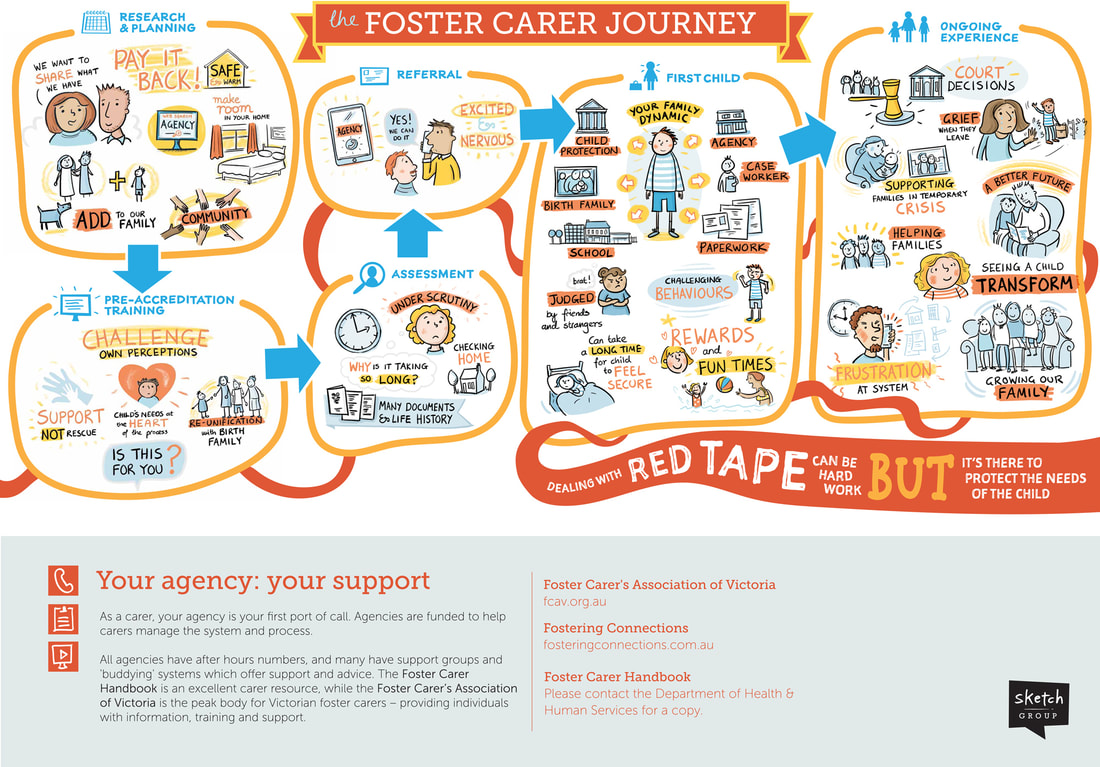
Journey map of Victoria’s foster care system, created for the Department of Health & Human Services
7. Gift it to your speakers.
If you’re an event organiser, you know that looking after your speakers is hugely important. You’ve gone to great lengths to arrange flowers, movie tickets, perhaps even spoiled them with flights and fancy accommodation. Why not go the extra mile and give them the most unique, relevant gift of all—a sketch of their talk that was created in real-time and perfectly captures the moment?
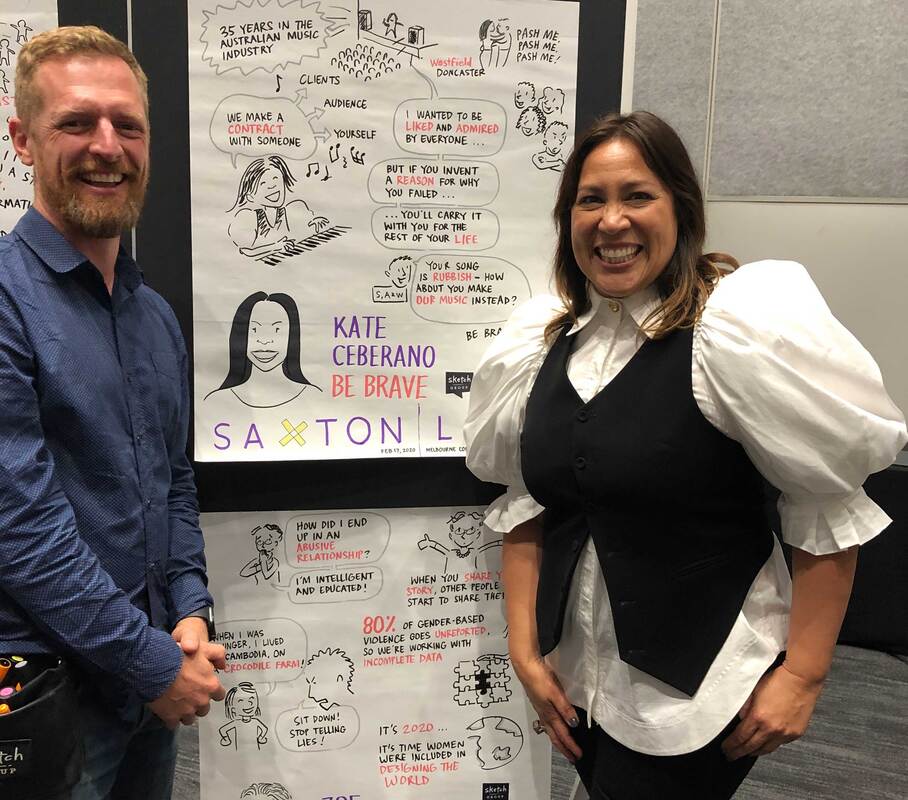
Luckily Kate liked “every little thing” that I drew.
Bonus Idea: Turn your graphic recording into a sketch video.
You know what’s even better than an image that perfectly summarises your event? A moving image that summarises your event (and it just so happens that we get particularly excited about that kind of thing here at Sketch Group). Whether it’s collaborating on a narrative that incorporates elements of your visual summary into a compelling story, or just peppering existing footage with bits and pieces of animation, there are plenty of ways that you can weave sketch imagery into your brand.
Excerpt of Merryl Semple’s presentation as part of the Vid19 conference
Harness the long tail
As you can see, there is more to having a graphic recorder capture your event than the novelty of visualising content in real-time (although, we’ll concede, it’s a pretty darn cool party trick). There is a “long tail” of marketing and goodwill for which your image can be useful. You’ve invested in these images, so you might as well capitalise on them.
We hope you’ve found these ideas useful. If you’ve repurposed a graphic recording in a creative way, I’d love to hear from you!

